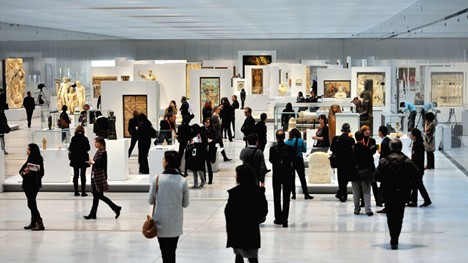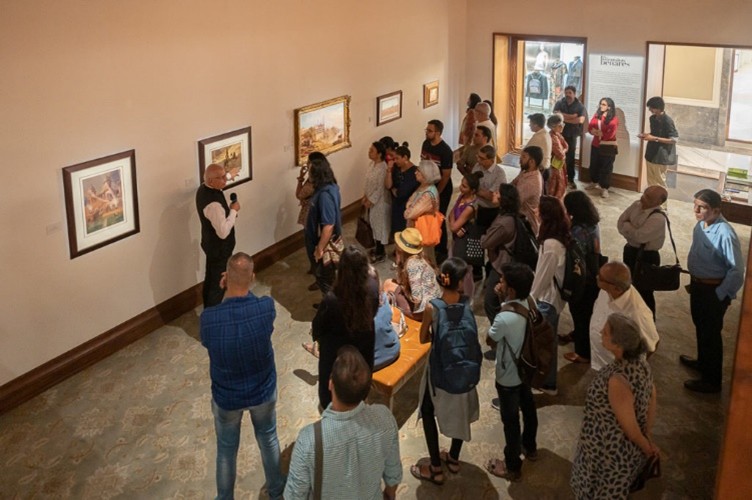
Blogs
Achieving Excellence: 10 Pro Tips for Museum Exhibit Design
Museum exhibit design is a captivating blend of art, science, and storytelling. It’s about creating immersive experiences that educate, inspire, and entertain visitors. Whether you’re designing for a Science & Technology Museum, an Art Museum, or a specialized Gallery, these 10 pro tips will guide you towards achieving excellence:

1. Define Clear Objectives:
Before a single sketch is drawn, clearly define the museum’s mission and the specific objectives of each exhibit. What message do you want to convey? Who is your target audience? How will visitors interact with the exhibit? Answering these questions will provide a strong foundation for the entire design process.
2. Conduct Thorough Research:
Thorough research is paramount. Delve into the subject matter, understand the historical context, and explore the latest museum design trends. Research your target audience’s interests and learning styles. This information will inform every aspect of the exhibit, from the choice of materials to the interactive elements.
3. Prioritize Visitor Experience:
Put yourself in the visitor’s shoes. How will they navigate the exhibit? Will the flow be logical and engaging? Will the lighting and sound design enhance or detract from the experience? Consider accessibility needs for visitors with disabilities. A well-designed visitor experience is key to a successful exhibit.
4. Embrace Storytelling:
Museums are not just repositories of artifacts; they are storytelling machines. Craft compelling narratives that connect with visitors on an emotional level. Use interactive elements, multimedia displays, and engaging graphics to bring the stories to life.
5. Consider Different Exhibit Types:
- Static Exhibits: Focus on clear labeling, effective lighting, and thoughtful presentation of artifacts.
- Outdoor Exhibits: Prioritize durability, weather resistance, and safety. Consider the impact of sunlight, wind, and rain.
- Sculptures: Ensure proper installation and support. Consider the surrounding environment and its impact on the artwork.
- Dynamic and Interactive Exhibits: Prioritize safety, durability, and ease of use. Conduct thorough testing to ensure smooth operation and prevent malfunctions.
- Projection and LED Screen Exhibits: Ensure high-quality visuals, proper calibration, and seamless integration with the overall exhibit design.

6. Prioritize Operations and Maintenance:
Museum exhibits face constant wear and tear from daily visitor traffic. Design with maintenance in mind. Choose durable materials, incorporate easy-to-clean surfaces, and ensure that all components are easily accessible for repairs.
7. Collaborate with Experts:
Successful exhibit design requires a multidisciplinary approach. Collaborate with architects and designers for museums, lighting designers, graphic designers, fabricators, and subject matter experts. Each brings unique skills and perspectives to the table.

8. Conduct User Testing:
Before the exhibit opens to the public, conduct user testing with a diverse group of individuals. Observe their interactions, gather feedback, and make necessary adjustments. This iterative process ensures that the exhibit meets its objectives and provides a positive visitor experience.
9. Embrace Sustainability:
Incorporate sustainable practices throughout the design and construction process. Choose eco-friendly materials, minimize waste, and consider the long-term environmental impact of the exhibit.
10. Evaluate and Adapt:
Continuously evaluate the exhibit’s effectiveness. Track visitor engagement, gather feedback, and make adjustments as needed. Museums are dynamic spaces, and exhibits should evolve over time to remain relevant and engaging.
modern, interactive museum exhibit with touchscreens and multimedia displays
Top 5 Science Museums in the World:
- Deutsches Museum (Munich, Germany): One of the oldest and largest science and technology museums globally, boasting over 28,000 exhibits across various scientific fields.
- Museum of Science and Industry (Chicago, USA): Home to iconic exhibits like the U-505 German submarine and the Apollo 8 command module, offering a captivating blend of history and interactive displays.
- Science Museum (London, UK): Showcases groundbreaking scientific discoveries and technological innovations, featuring interactive exhibits and thought-provoking displays.
- California Academy of Sciences (San Francisco, USA): A unique blend of aquarium, planetarium, natural history museum, and living rainforest, offering immersive experiences for all ages.
- National Air and Space Museum (Washington D.C., USA): Showcases the history of flight and space exploration, featuring iconic aircraft like the Wright Flyer and the Apollo 11 command module.
Peach Prime Consultancy, with its expertise in project management and a deep understanding of visitor engagement, can effectively guide museum and exhibit development. We can assist in defining clear objectives, conducting thorough audience research, and selecting the most suitable exhibit types to achieve your goals. Our team can collaborate with architects, designers, and fabricators to ensure seamless integration and a high-quality end product. Additionally, we can help optimize exhibit operations and maintenance for a long-lasting and enjoyable visitor experience.




